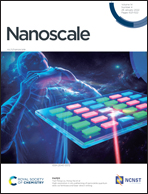Alloy electrode engineering in memristors for emulating the biological synapse†
Abstract
The development of conductive bridging random access memory (CBRAM) as an artificial synaptic device is an important step in the realization of an efficient biomimetic neural morphology computing system. In fact, CBRAM devices with simple substance electrodes often form unstable and discrete conductive filaments, thereby resulting in poor device performance. In this work, the effects of different alloy electrode ratios on the performance of HfOx devices with dielectric layers were systematically investigated via electrode composition engineering. The devices (a kind of memristor) with an Ag–Cu ratio of 63 : 37 exhibited a lower formation voltage and set voltage, better set voltage distribution uniformity, faster response speed, and lower power consumption than other devices. Moreover, the device is capable of emulating the biosynapse functions, including paired-pulse facilitation (PPF), post-tetanic potentiation (PTP), spike-rate-dependent plasticity (SRDP), and spike-timing-dependent plasticity (STDP). Interestingly, the associative learning process of Pavlov's dog experiment and aversion therapy were also realized without the use of complex external circuits. The use of electrode component engineering provides a new path for boosting the memristor properties via CBRAM devices, thereby laying the foundation for further development of neural morphology computing systems.



 Please wait while we load your content...
Please wait while we load your content...